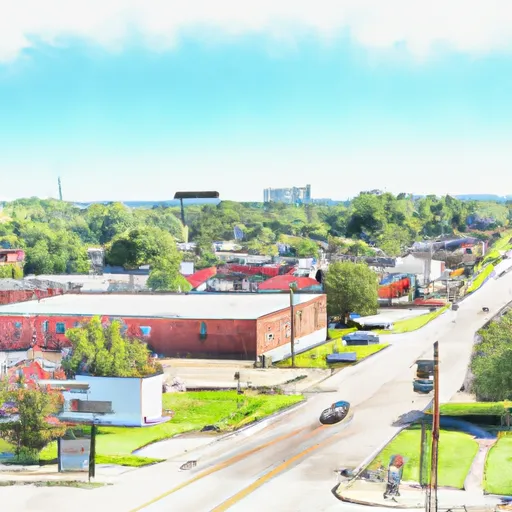-
 Snoflo Premium
Snoflo Premium
Get unlimited access to all our content
With no Ad interruptions! - Start Your Free Trial Login with existing account
Reader
Eden Index
Climate
7.5
•
Recreation
4.5
•
Community
•
Safeguard
4.6/10

Reader, Arkansas is a small town located in the southern part of the state. The climate in Reader is classified as humid subtropical, characterized by hot and humid summers and mild winters. Summers are typically hot with temperatures often reaching the 90s Fahrenheit, while winters are mild with temperatures averaging around the 50s. The area receives a moderate amount of rainfall throughout the year.
Reader is also known for its hydrology constituents, with a few small creeks and streams running through the area. These waterways provide opportunities for fishing and boating, allowing residents and visitors to enjoy the natural beauty of the surrounding landscapes.
In terms of outdoor recreation, Reader offers various options. The town is surrounded by beautiful forests and natural areas, making it ideal for hiking, camping, and wildlife observation. Additionally, nearby lakes and reservoirs provide opportunities for water activities like swimming, kayaking, and fishing. Nature enthusiasts can explore the rich biodiversity of the region, spotting various bird species and other wildlife.
Overall, Reader, Arkansas offers a pleasant climate, picturesque hydrology constituents, and ample outdoor recreation opportunities, making it an attractive destination for nature lovers and outdoor enthusiasts.
What is the Eden Index?
The Snoflo Eden Index serves as a comprehensive rating system for regions, evaluating their desirability through a holistic assessment of climate health, outdoor recreation opportunities, and natural disaster risk, acknowledging the profound impact of these factors on livability and well-being.
Climate Health Indicator (CHI): 7.5
Reader receives approximately
1332mm of rain per year,
with humidity levels near 90%
and air temperatures averaging around
17°C.
Reader has a plant hardyness factor of
8, meaning
plants and agriculture in this region tend to thrive here all year round.
By considering the ideal temperature range, reliable water supplies, clean air, and stable seasonal rain or snowpacks, the Climate Health Indicator (CHI) underscores the significance of a healthy climate as the foundation for quality living.
A healthy climate is paramount for ensuring a high quality of life and livability in a region, fostering both physical well-being and environmental harmony. This can be characterized by ideal temperatures, reliable access to water supplies, clean air, and consistent seasonal rain or snowpacks.
Weather Forecast
Streamflow Conditions
Upper Ouachita
Area Rivers
Upper Ouachita
Snowpack Depths
Upper Ouachita
Reservoir Storage Capacity
Upper Ouachita
Groundwater Levels
Recreational Opportunity Index (ROI): 4.5
The Recreational Opportunity Index (ROI) recognizes the value of outdoor recreational options, such as parks, hiking trails, camping sites, and fishing spots, while acknowledging that climate plays a pivotal role in ensuring the comfort and consistency of these experiences.
Access to outdoor recreational opportunities, encompassing activities such as parks, hiking, camping, and fishing, is crucial for overall well-being, and the climate plays a pivotal role in enabling and enhancing these experiences, ensuring that individuals can engage in nature-based activities comfortably and consistently.
Camping Areas
| Campground | Campsites | Reservations | Toilets | Showers | Elevation |
|---|---|---|---|---|---|
| White Oak Park | 7 | 12 ft | |||
| Fullerton Complex | 36 | 307 ft | |||
| Kisatchie Bayou Complex | 30 | 167 ft | |||
| Red Bluff Camp Complex | 10 | 205 ft | |||
| Lotus Camp | 20 | 215 ft | |||
| Oak Camp Complex | 23 | 300 ft | |||
| Enduro Complex | 35 | 269 ft | |||
| Lorrain Parish Park | 15 | 5 ft | |||
| John Blank Sportsman Park | None | 14 ft | |||
| Dogwood Complex | 12 | 174 ft |
Nearby Ski Areas
Catastrophe Safeguard Index (CSI):
The Catastrophe Safeguard Index (CSI) recognizes that natural disaster risk, encompassing floods, fires, hurricanes, and tornadoes, can drastically affect safety and the overall appeal of an area.
The level of natural disaster risk in a region significantly affects safety and the overall livability, with climate change amplifying these risks by potentially increasing the frequency and intensity of events like floods, fires, hurricanes, and tornadoes, thereby posing substantial challenges to community resilience and well-being.
Community Resilience Indicator (CRI):
The Community Resilience Indicator (CRI) recognizes that education, healthcare, and socioeconomics are crucial to the well-being of a region. The CRI acknowledges the profound impact of these elements on residents' overall quality of life. By evaluating educational resources, healthcare accessibility, and economic inclusivity, the index captures the essential aspects that contribute to a thriving community, fostering resident satisfaction, equity, and social cohesion.

